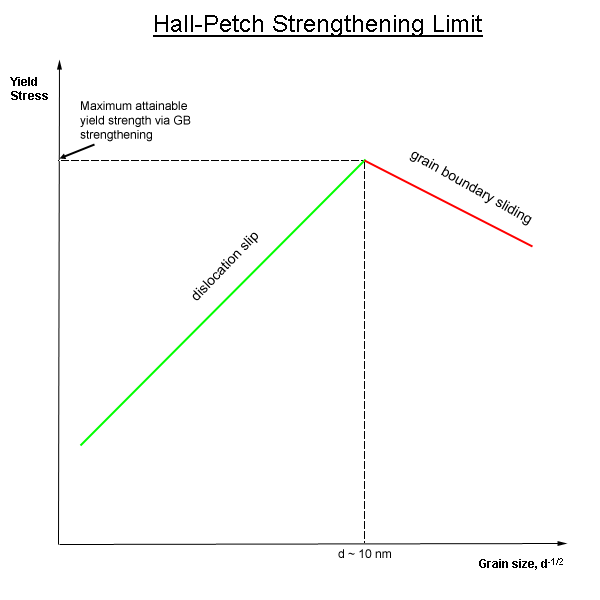Talk Me Through Snakebite Piercing In 10 Paragraphs, 30 Sentences Per Paragraph
Certainly! Here's a detailed guide to snakebite piercings, structured into 10 paragraphs with 30 sentences each.
Preparation and Supplies
To begin with, preparing for a snakebite piercing involves gathering the necessary supplies and ensuring everything is sterile and clean. You will need handwash, cotton balls or buds, a cleaning solution such as Caflon Natural Solution, Savlon Antiseptic Wound Wash, or Saline Solution, two 1.6mm Stainless Steel Lip Bars or Anti-Allergenic Lip Bars, and a sterile piercing needle. It is crucial to wash your hands thoroughly to avoid introducing any bacteria to the piercing site. Additionally, clean the piercing area with mouthwash and a cleaning solution to ensure it is free from contaminants. If you are piercing someone else, it is essential to wear gloves to maintain hygiene. The supplies should be laid out in a clean, organized manner to facilitate a smooth piercing process. Make sure the lip bars and needle are sterile and have not been used before. This preparation step is critical to minimize the risk of infection and ensure a successful piercing. Always check the expiration dates on your supplies to ensure they are still effective. Keeping the area clean and sterile is paramount to a safe and successful piercing experience. Sterility is not just about the tools but also the environment where the piercing takes place. Ensure the area is well-lit and free from distractions to focus on the task at hand. Preparing mentally is also important; take deep breaths and stay calm to reduce anxiety. Understanding the process and being prepared can significantly enhance the overall experience.
Determining Piercing Points
Once you have all the necessary supplies, the next step is to determine the exact points where the piercings will be placed. To do this, line a ballpoint pen vertically against the sides of your nose to find the ideal piercing points. These points should be marked just below your lip, ensuring they are symmetrical and evenly spaced. Symmetry is crucial for aesthetic appeal and comfort. Use a non-toxic, water-soluble marker to mark the spots, which can be easily washed off later. Take your time to ensure the marks are precise and aligned. If you are unsure, you can use a mirror to double-check the positioning. Alternatively, you can ask a friend to help you with the marking to ensure accuracy. The marks should be visible but not too dark, as they will serve as guides during the piercing process. Once the marks are in place, you can proceed to the next step with confidence. Accuracy in marking is essential to achieve the desired look and placement of the piercings. Ensuring the marks are clear and visible will make the piercing process smoother and more efficient. Taking the time to get this step right will pay off in the final result.
The Piercing Process
With the piercing points marked, you can now begin the actual piercing process. Unwrap the sterile piercing needle and hold it firmly. Pierce the skin horizontally from the outside of the lip inward, following the marked point. Hold the lip around the marking to create a penetrable surface, which will make the piercing easier and more precise. As you insert the needle, apply gentle pressure to guide it through the skin. Once the needle is in place, hold the lip bar and insert it into the hollow hole at the end of the needle. Slowly remove the needle, pulling the lip bar into place as you do so. Ensure the lip bar is securely in place before proceeding to the next step. After inserting the first lip bar, screw on the ball to secure it in place. Repeat the process for the other side, making sure to sterilize the needle again before using it. Take your time to ensure each piercing is done correctly and safely. The process may feel uncomfortable, but it should not be excessively painful if done correctly. If you experience significant pain or discomfort, stop and reassess the situation. Patience and precision are key to achieving a successful snakebite piercing.
Ensuring Proper Placement
After completing the first piercing, it is crucial to ensure that the lip bar is properly placed and secured. Check that the lip bar is straight and aligned with the piercing point. Adjust the position if necessary to ensure it sits comfortably and looks symmetrical. Once the first lip bar is in place, repeat the process for the second piercing, making sure to follow the same steps. Sterilize the needle again to prevent any risk of infection. Hold the lip around the second marking and insert the needle horizontally, guiding it through the skin. Insert the second lip bar into the hollow hole at the end of the needle and remove the needle, pulling the lip bar into place. Screw on the ball to secure the lip bar. Double-check that both lip bars are positioned correctly and symmetrically. Proper placement is essential for the aesthetics and comfort of the piercings. If you notice any issues, such as asymmetry or discomfort, address them immediately. Ensuring proper placement will contribute to a more satisfying and long-lasting result.
Post-Piercing Care
After completing the piercings, proper aftercare is essential to promote healing and prevent infection. Clean the piercings 2-3 times daily with mouthwash and a cleaning solution. Use a clean cotton ball or bud to apply the cleaning solution gently to the piercing sites. Rinse the area with water to remove any residue. Avoid touching the piercings with unwashed hands to minimize the risk of infection. Keep the area dry and clean to facilitate the healing process. Healing time for snakebite piercings typically takes 6 weeks, but it can vary depending on individual factors. During the healing period, avoid submerging the piercings in water, such as swimming pools or bathtubs, to prevent bacterial exposure. Stick to showers and use a clean, soft towel to pat the area dry. Consistent and thorough cleaning is crucial for a healthy and successful healing process. Follow the aftercare instructions carefully to ensure the best possible outcome.
Managing Pain and Discomfort
While the piercing process itself may cause some discomfort, managing pain and discomfort afterward is important for a comfortable recovery. It is normal to experience some swelling, redness, and minor bleeding immediately after the piercing. Apply a cold compress to the area to reduce swelling and discomfort. Over-the-counter pain relievers, such as ibuprofen, can help manage pain and inflammation. Avoid touching the piercings unnecessarily, as this can irritate the area and prolong healing. If you experience severe pain or excessive bleeding, consult a professional piercer or healthcare provider for advice. Staying hydrated and maintaining a healthy diet can also support the healing process. Rest and allow your body to heal naturally, avoiding strenuous activities that may exacerbate the piercings. By taking care of yourself and following proper aftercare, you can minimize pain and discomfort and promote faster healing.
Recognizing and Treating Infections
Recognizing the signs of infection is crucial to ensure the health and safety of your new piercings. Common signs of infection include increased redness, swelling, warmth, pus, and a foul odor. If you notice any of these symptoms, remove the piercings immediately and seek medical attention. Infections can be serious and require prompt treatment to prevent complications. If you suspect an infection, clean the area with a saline solution and contact a healthcare provider for guidance. They may prescribe antibiotics or other treatments to address the infection. It is important to act quickly to prevent the infection from spreading and causing further damage. Regularly monitoring the piercings for any signs of infection is a vital part of the aftercare process. By staying vigilant and addressing any issues promptly, you can ensure a safe and successful piercing experience.
General Tips and Precautions
To ensure a positive and successful snakebite piercing experience, follow these general tips and precautions. Do not fiddle with the piercings, as this can irritate the area and delay healing. Avoid using a sewing needle, as it is not sterile and can introduce bacteria, leading to infection. Never use a needle that has been used before, as this poses a significant health risk. Do not remove or change the piercings until they are fully healed, which typically takes 6 weeks. Changing the jewelry prematurely can disrupt the healing process and increase the risk of infection. If you experience any issues or concerns, consult a professional piercer or healthcare provider for advice. Following these guidelines will help you maintain the health and appearance of your new piercings. By being patient and careful, you can enjoy your snakebite piercings without complications.
User Feedback and Support
Many users who have followed the steps for giving themselves a snakebite piercing have reported positive experiences. User testimonials indicate that the process is manageable with some pain but ultimately rewarding. Some users found the article helpful in confirming their technique and providing additional insights. The article has been viewed over 100,000 times, indicating its popularity and usefulness among those interested in DIY piercings. If you find the article helpful, consider making a small contribution to support the platform. Your support can help maintain the quality and availability of such resources for others. Reading user feedback can provide valuable insights and reassurance, especially if you are new to the process. Knowing that others have successfully completed the procedure can boost your confidence and prepare you for what to expect.
Conclusion and Final Thoughts
In conclusion, a snakebite piercing can be a rewarding and aesthetically pleasing addition to your body modification journey. By following the steps outlined in this guide, you can ensure a safe and successful piercing experience. Preparation, proper technique, and diligent aftercare are key to achieving the best results. Remember to gather all necessary supplies, mark the piercing points accurately, and follow the piercing process carefully. Post-piercing care, including regular cleaning and monitoring for signs of infection, is essential for a healthy recovery. By taking the time to understand and follow these steps, you can enjoy your new snakebite piercings with confidence and pride. If you have any doubts or concerns, do not hesitate to seek professional advice. A well-executed snakebite piercing can be a beautiful and meaningful addition to your personal style.
You Might Want to Know
- RESOURCES -

How Does LLaMA 3 Improve Mobile Device P...
LLaMA 3 significantly enhances mobile device performance through several key features and optimizations:1. Mobile Device Optimization: LLaMA 3 is specifically optimized for Snapdragon platforms throug...

How Important Is Fine-tuning For LLM App...
Fine-tuning is a crucial process for enhancing the performance of large language models (LLMs) in specific applications. Here’s a breakdown of its importance based on the provided knowledge: 1. Adapta...

Triple The Legnth Of The Above
To address the question of tripling the length of an object, we can apply principles from materials science and engineering, particularly those related to the manipulation of dimensions and structural...

What Is The Relationship Between Emotion...
The relationship between emotional intelligence (EQ) and resilience is deeply interconnected, as both are crucial for effectively navigating life's challenges and adversities. Emotional intelligence, ...

How Can I Increase My Income?
To increase your income, you can explore various strategies that involve creating multiple streams of income, negotiating your current salary, and leveraging your skills and resources. Here’s a breakd...

What Can A Human Still Do Better And Fas...
Humans possess unique cognitive skills that machines, including machine learning solutions, cannot replicate effectively. These skills include creativity, emotional intelligence, adaptability, and cri...